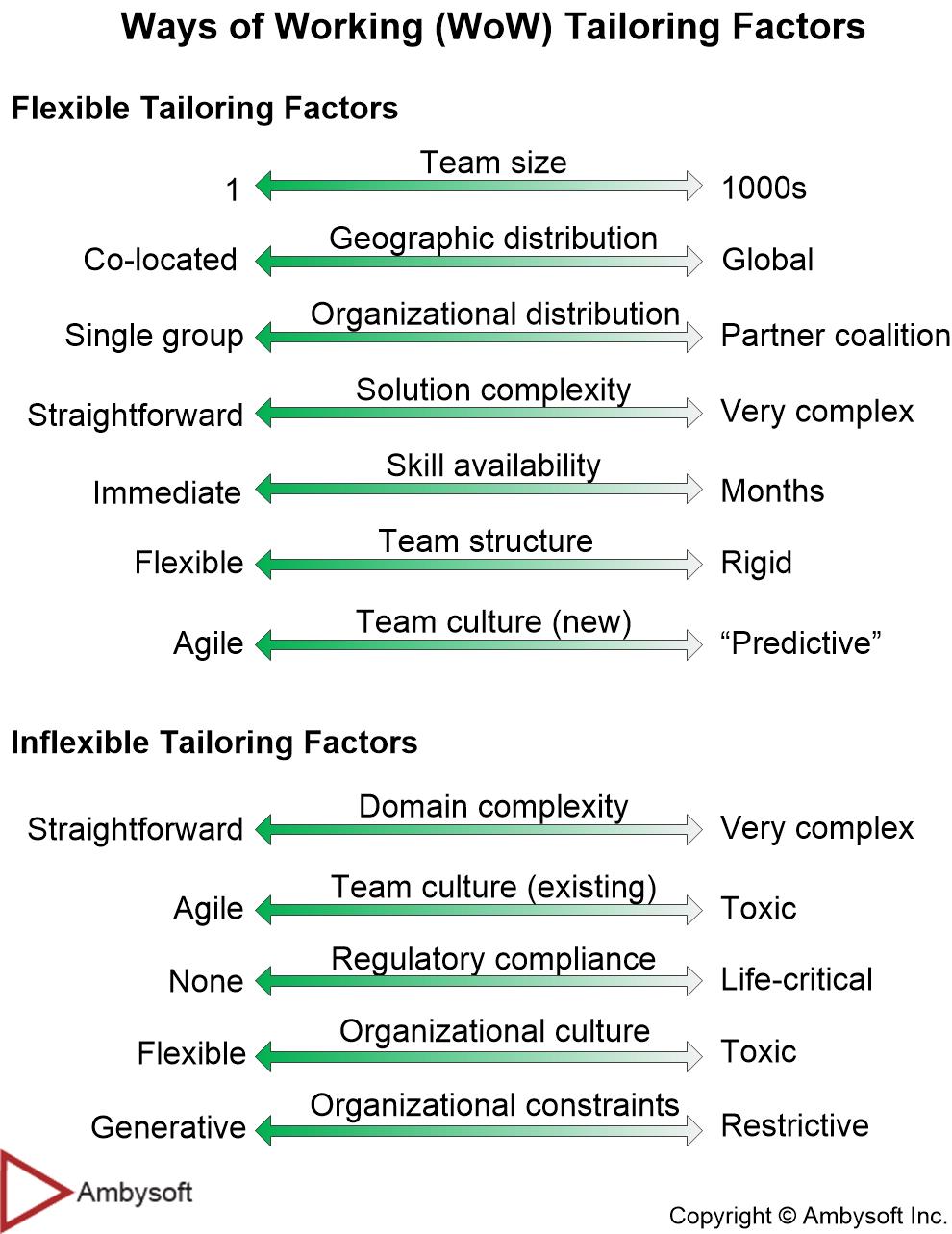Tailoring Your Way of Working (WoW): Factors to Consider
My experience, after close to four decades in the professional world, is that you want to tailor your way of working (WoW) for the situation that you face. What factors should you consider when doing so, or more importantly, what factors motivate you to tailor your WoW to vary from the advice prescribed by methods and frameworks such as Scrum and SAFe? That is the focus of this article.
I’ve been thinking about this issue and applying those ideas in practice since the mid-00s. At IBM, I developed something called the Agile Scaling Model (ASM), which was similar at the time to Philipe Kruchten’s octopus model, which was developed in parallel to my work. Later, at Disciplined Agile Consortium (DAC), I evolved ASM into the Software Development Context Framework (SDCF). I evolved it once again at PMI into the Situation Context Framework (SCF) to remove the software bias from it. This article reflects my current thinking on this subject.
Tailoring Factors That Impact Your WoW
A tailoring factor is an issue or consideration that can potentially influence the way that you or a team will work. For example, the difficulty of the task or goal that you face will likely drive how sophisticated your approach will be. Your skill, either of yours or your team’s, will also impact the way that you work. And there are other tailoring factors, described below. Tailoring factors are also called complexity factors or even scaling factors, and I have used both terms in the past. I’ve come to recognize that tailoring factor as the most accurate term for the concept.
As you see in Figure 1, I have organized the tailoring factors into two categories: flexible factors that you should be able to influence and inflexible factors that you will have little influence over in the short term. In the past, I organized the tailoring factors into two categories: selection factors that influence your overall choice in approach and scaling factors which influence your overall choice of practices/strategies. While this categorization made a lot of sense, I suspect a better approach is to organize the factors into these two categories, as they are more applicable to tailoring.
Figure 1. The WoW tailoring factors.
Flexible WoW Tailoring Factors You Likely Control
The following tailoring factors are typically under your control, or at least can be influenced by you:
- Team size.
- Geographic distribution.
- Organization distribution.
- Solution complexity.
- Skill availability.
- Team structure.
- Team culture (new). Interestingly, although I usually avoid the term predictive due to its deceptiveness (I’m being polite, it’s borderline unethical) it does in fact make sense in a small number of contexts to build a team culture that leans towards the traditional/predictive end of the spectrum.
Inflexible WoW Tailoring Factors That Aren’t Easily Influenced
The following tailoring factors are typically NOT under your control, and are often difficult to influence:
- Domain complexity.
- Team culture (existing).
- Regulatory compliance.
- Organization culture.
- Organizational constraints.
Acknowledgements
I’d like to thank Michel Thiry for his input regarding the labels on the factors, in particularly “Predictive” for the less desirable (right side) option on Team culture (new). Although I would have preferred consistency with Team culture (existing) and Organization culture, both of which have “Toxic” for the less desirable option, the unfortunate fact is that your existing team or organizational culture may in fact be toxic, whereas it may make sense in some contexts to build a new, “predictive” culture in your team (and in your organization for that matter).

